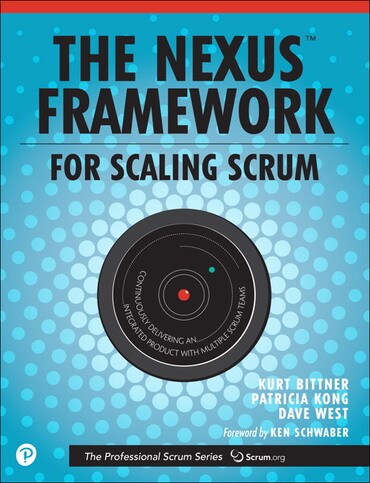
- Kurt Bittner |
- Patricia Kong |
- Dave West |
Title overview
Oracle Cloud Infrastructure: A Guide to Building Cloud Native Applications
Cloud native development is a modern approach to designing, building, deploying, and managing applications. This approach takes advantage of the benefits of utility computing from providers, such as Oracle Cloud Infrastructure (OCI), and emphasizes automation, elasticity, and resilience.
OCI is a next-generation cloud designed to run any application faster and more securely for less. It includes the tools used to build new cloud native applications and to run existing enterprise applications without rearchitecting them.
Whether you are new to the cloud or just new to OCI, this book provides an overview of the OCI services needed to build cloud native applications. You will learn
- OCI concepts and terminology
- How to manage Infrastructure as Code using modern tools and platforms
- OCI’s breadth of cloud native services
- How to operate the managed Kubernetes service (Container Engine for Kubernetes) at scale
- How to configure a cluster for advanced use cases, and use specialized hardware capabilities
- How to use cloud native application deployment platforms and observability tools
- How to secure applications, data, and the underlying infrastructure using open-source and OCI native security tools and processes
The culmination of the book is an open-source sample application composed of microservices that incorporates the tools and concepts shared throughout the book and is available on GitHub.
- Provides practical techniques and practices for adopting Scrum consistently across your organization
- Helps you build on your agile knowledge to apply Scrum in larger and more complex situations
- Shows how to form a Nexus across multiple Scrum teams and make it work effectively with shared services and non-Agile teams
- Helps you reap the full benefits of fast product feedback cycles
- Offers significant advantages over SAFe, LeSS, and other large-scale agile approaches
- By four co-creators of Scrum.org, with a foreword by Scrum co-developer Ken Schwaber
Table of contents
Foreword xi
Preface xiii
Acknowledgments xvii
About the Authors xix
Chapter 1: Introduction to Scaling Agile 1
Why Agile? 2
Why Scrum? 2
Why Nexus? 5
Simplicity Is the Key to Scaling 6
Chapter 2: Introducing Nexus 7
What Is Nexus? 7
Nexus Extends Scrum 8
The Nexus Integration Team 10
Nexus Events 12
Nexus Artifacts 17
What Do You Need to Get Started with Nexus? 19
Closing 20
Chapter 3: Forming a Nexus 21
Evolving a Cross-functional Team 24
Growing a Nexus 29
Forming the Nexus Integration Team 32
How Does a Nexus Work? 34
Chapter 4: Planning in Nexus 35
Consolidating and Validating the Product Backlog 35
Planning a Sprint in a Nexus 47
Closing 55
Chapter 5: Running a Sprint in Nexus 57
The Nexus Daily Scrum 58
Providing Transparency Inside and Outside the Nexus 61
Nexus Sprint Retrospective 68
Closing 73
Chapter 6: Evolving the Nexus 75
Optional Practice: Organizing Scrum Teams around Features 77
Optional Practice: Managing Code Like an Open-Source Project 78
Optional Practice: Organizing Teams around Personas 81
Expanding the Nexus Integration Team 83
Updating and Refining the Product Backlog 83
Nexus Sprint Planning, Revisited 85
The Nexus Daily Scrum, Take Two 86
The Nexus Sprint Review, Take Two 88
The Nexus Sprint Retrospective, Take Two 89
Closing 96
Chapter 7: The Nexus in Emergency Mode 97
Product Backlog Refinement, Take Three 99
Nexus Sprint Planning, Take Three 102
The Nexus Daily Scrum, Take Three 108
What to Do When the Nexus Starts to Struggle 110
The Nexus (Pseudo) Sprint Review and Retrospective 118
Closing 119
Chapter 8: Retrospective on the Nexus Journey 121
What Worked Well 122
Areas for Improvement 126
What’s Next? 132
Closing 133
Glossary 135
Index 143
Author bios
Kurt Bittner has more than 35 years of experience helping teams to deliver software in short feedback-driven cycles, as a developer, as a product manager, and product owner; as an industry analyst; and as an organizational change agent. He is the author of three other books on software engineering, many blogs and articles, and is a frequent speaker at conferences.
Patricia Kong is a key contributor to the Nexus framework and the Evidence-Based Management framework. She led product development, product management, and marketing for several early-stage companies in the US and Europe, and worked in business development and engagement management for Forrester Research. She is fluent in four languages.
Dave West is the CEO and Product Owner at Scrum.org. He is a frequent keynote at major industry conferences and is a widely read author of books, blogs, articles, and research reports. He has led both product development and consulting organizations for multi-national organizations.